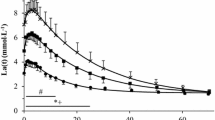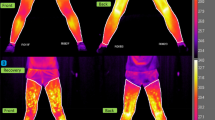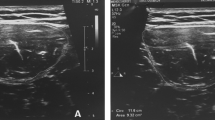Summary
Blood lactate accumulation was studied during progressive arm exercise in male and female world class kayak paddlers (K♂, K♀,n=11), weight-/power-lifters (WL/PL,n=6), bodybuilders (BB,n=8) and non-athletes (NA,n=6). The heavy resistance trained athletes exhibited greater upper-body muscle volume than the other subject groups. During low submaximal exercise intensities, blood lactate concentrations were significantly lower both in male and female kayakers compared with WL/PL, BB, and NA. Mean values at 120 W were 1.9 (K♂), 2.1 (K♀), 4.8 (WL/PL), 4.5 (BB), and 5.1 (NA) mmol·l−1. At higher power outputs the difference between females and non-kayakers diminished, while the difference between K♂ and all other groups increased. Exercise tolerance was greatest in K♂ and was equal among the other groups. Our results suggest that factors other than the muscle mass per se involved in exercise are responsible for the blood lactate response during this kind of work. Moreover, the physiological response observed in kayakers probably represents the upper limit of man's ability to perform continuous progressive arm-cranking exercise.
Similar content being viewed by others
References
åstrand P-O, Saltin B (1961) Maximal oxygen uptake and heart rate in various types of muscular activity. J Appl Physiol 16: 977–981
Bergh U, Kanstrup IL, Ekblom B (1976) Maximal oxygen uptake during exercise with various combinations of arm and leg work. J Appl Physiol 41: 191–196
Cerretelli P, Pendergast D, Paganelli WC, Rennie DW (1979) Effects of specific muscle training on\(\dot V_{O_2 } \) on response and early blood lactate. J Appl Physiol 47: 761–769
Clausen J, Klausen K, Rasmussen B, Trap-Jensen J (1973) Central and peripheral circulation changes after training of arms and legs. Am J Physiol 225: 675–682
Davis JA, Vodak P, Wilmore JH, Vodak J, Kurtz P (1976) Anaerobic threshold and maximal aerobic power for three modes of exercise. J Appl Physiol 41: 544–550
Döbeln von W (1964) Determination of body constituents. In: Blix G (ed) Occurrence, causes and prevention of overnutrition. Almqvist & Wiksell, Uppsala, pp 103–106
Ekblom B (1969) Effect of physical training on oxygen transport system in man. Acta Physiol Scand [Suppl] 328
Gollnick PD, Armstrong RB, Saubert IV CW, Piehl K, Saltin B (1972) Enzyme activity and fiber composition in skeletal muscle of untrained and trained men. J Appl Physiol 33: 312–319
Holloszy JO (1975) Adaptations of skeletal muscle to endurance exercise. Med Sci Sports 7: 155–164
Karlsson J, Nordesjö L, Jorfeldt L, Saltin B (1972) Muscle lactate, ATP, and CP levels during exercise after physical training in man. J Appl Physiol 33: 199–203
Karlsson J, Jacobs I, Sjödin B, Tesch P, Kaiser P, Sahl O, Karlberg B (1983) Semi-automatic blood lactate assay: experiences from an exercise laboratory. Int J Sports Med 4: 45–48
Klausen K, Rasmussen B, Clausen JP, Trap-Jensen J (1974) Blood lactate from exercising extremities before and after arm or leg training. Am J Physiol 227: 67–72
McGrail JC, Bonen A, Belcastro AN (1978) Dependence of lactate removal on muscle metabolism in man. Eur J Appl Physiol 39: 89–97
Pendergast D, Cerretelli P, Rennie DW (1979) Aerobic and glycolytic metabolism in arm exercise. J Appl Physiol 47: 754–760
Pipes TV (1979) Physiologic characteristics of elite body builders. Phys Sports Med 7: 116–120
Rydevik U, Nord L, Ingman F (1982) Automatic lactate determination by flow injection analysis. Int J Sports Med 3: 47–49
Saltin B, Rowell LB (1980) Functional adaptations to physical activity and inactivity. Fed Proc 39: 1506–1513
Saltin B, Henriksson J, Nygaard E, Andersen P, Jansson E (1977) Fiber types and metabolic potentials of skeletal muscles in sedentary man and endurance runners. NY Acad Sci 301: 3–29
Sawka MN, Foley ME, Pimental NA, Toner MM, Pandolf KB (1983) Determination of maximal aerobic power during upper-body exercise. J Appl Physiol 54: 113–117
Sjödin B (1976) Lactate dehydrogenase in human skeletal muscle. Acta Physiol Scand [Suppl] 436
Skinner JS, McLellan TH (1980) The transition from aerobic to anaerobic metabolism. Res Q 50: 234–248
Spitler DL, Diaz FJ, Horvath SM, Wright JE (1980) Body composition and maximal aerobic capacity of bodybuilders. J Sports Med 20: 181–188
Tesch PA (1983) Physiological characteristics of elite kayak paddlers. Can J Appl Spt Sci 8: 87–91
Tesch PA, Karlsson J (1984) Muscle metabolite accumulation following maximal exercise: a comparison between short-term and prolonged kayak performance. Eur J Appl Physiol 52: 243–246
Tesch P, Piehl K, Wilson G, Karlsson J (1976) Physiological investigations of Swedish elite canoe competitors. Med Sci Sports 8: 214–218
Tesch P, Karlsson J, Sjödin B (1982) Muscle fiber type distribution in trained and untrained muscles of athletes. In: Komi PV (ed) Exercise and sport biology. Human Kinetics Publ, Champaign, IL, pp 79–83
Tesch PA, Thorsson A, Kaiser P (1984) Muscle capillary supply and fiber type characteristics in weight and power lifters. J Appl Physiol: Respir Environ Exercise Physiol 56: 35–38
Vrijens J, Hoekstra J, Bouckaert J, Van Tyvanck P (1975) Effects of training on maximal working capacity and haemodynamic response during arm and leg exercise in a group of paddlers. Eur J Appl Physiol 3: 113–119
Author information
Authors and Affiliations
Rights and permissions
About this article
Cite this article
Tesch, P.A., Lindeberg, S. Blood lactate accumulation during arm exercise in world class kayak paddlers and strength trained athletes. Europ. J. Appl. Physiol. 52, 441–445 (1984). https://doi.org/10.1007/BF00943377
Accepted:
Issue Date:
DOI: https://doi.org/10.1007/BF00943377




